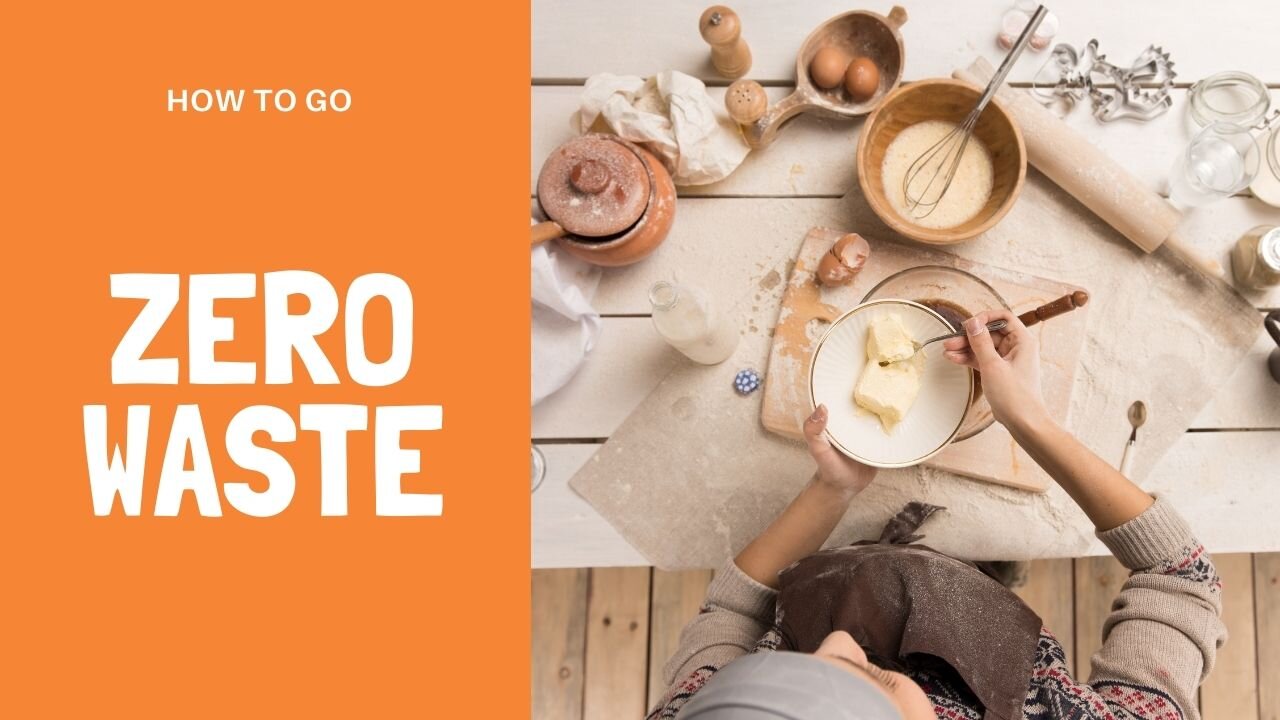15 Zero Waste Cooking and Drinking Tips
15 tips you can start implementing today to cut down on your food and drink waste, become more sustainable and eco-friendly.
Cutting down on waste can often seem like a, well, boring task. Discarding waste in a certain way, changing the way you cook. They all seem quite time consuming. However, with the right products and the right mindset, you can easily go waste free with your cooking and drinking with minimal effort and barely any lifestyle changes.
You will be surprised by just how changing the smallest aspect of your eating and drinking will cut down on your food and drink waste exponentially.
And this isn’t all about kumbaya “lets save our planet now so future generations of a planet to call home” stuff. No no no. I mean don’t get me wrong. The planets in dire need of saving and if everyone took one small tip from this article, even though its as small as eating and drinking, then the world would be in a whole better shape. But there is a huge selfish aspect of living a life of sustainability and zero-waste. In the long run it saves you money.
Go Waste Free and Save Money at the same time
A great aspect about utilising the tips I have listed below is that with a lot of them, you end up saving money. The average UK household wastes around £500 per year according to something I read on the internet. That’s a lot of money.
Once you take into consideration things like growing your own produce where you can, utilising your leftovers and not buying single use bottles and coffee cups. You will save a hell of a lot of hard earned cash.
To be frank, some of these things have an upfront cost, purchasing a reusable bottle, maybe even a compost bin. And shopping locally as sustainable as it is, still costs more money then big waste consuming supermarkets. But you’re balancing that with savings in the long run. Meaning you’ll end up way in the green. Ching ching
Zero Waste Drinking
For this first section, we will focus solely on sustainable drinking. Drinks, cocktails, even water. It all seems pretty unassuming as far as waste goes. But you will be surprised at just how much waste your drinking can be causing. Making changes to your drinking habits is the easiest step to take and often has the biggest impact.
#1 Using a Sodastream
If you’re the kind of person who loves carbonated water then getting a sodastream will vastly improve your eco footprint. By making your own soda at home with the sodastream reusable bottle, you will save on constantly having to buy single use bottles. One reusable SodaStream carbonating bottle can save up to 1282 single use plastic bottles from our planet over 4 years.
Not to mention that if you drink a lot of carbonated beverages then sodastream will save you money in the long run. So it’s not just eco-friendly but it's also budget-friendly. I use my sodastream all the time and absolutely love it. If you want to see my review on sodastreams and more about the money saving aspects check out my sodastream review here.
#2 Reusable bottles
We spoke about how using the sodastream reusable bottles are a big waste saver above. But what about if you don’t like carbonated water? Instead you drink a lot of still water or squash? Then you need to get yourself a reusable bottle. This single act will cut down your plastic waste massively.
One that’s highly reviewed on Amazon, looks good, plenty of design options and is cheap to buy is the Proworks.
#3 Reusable coffee cups
Reusable coffee cups not only look better then single use coffee cups, but they are also a lot cleaner. If you get a lot of take away coffees then why not purchase a your own coffee cup and ask your barista to use that instead? You will save on coffee cup waste and look cute whilst doing it.
As an added plus, a lot of places will actually discount your bill if you use your own cup. Score.
As for the coffee cup I recommend, the below vacuum insulated travel mug, leakproof double wall stainless steel reusable coffee travel cup with lid and a matte texture on Amazon is the way to go. You can get it in either black, white or pink. It’s simple, subtle and works perfectly.
#4 Reusable drinking straws
Reusable drinking straws are a good one if you drink out a lot. Straw wastage doesn’t seem that detrimental but its one of the worse things about drinking out in terms of the eco-friendliness. Plastic straws are difficult to decompose and end up all over our shorelines.
Reusable straws are also great if you’re a little bit of a clean freak. (which most of us are after the last year) Drinking from your own straw means your lips never have to touch a strange glass ever again.
#5 Sustainable brands
One of the easiest way you can make your drinking waste free without making any dramatic lifestyle changes, is to start buying sustainable brands. By supporting sustainable brands, as a by product, you yourself become more sustainable.
The simplest way to start this is by researching some of the brands you buy the most and determining what there stance is on sustainability. If they are very wasteful, then do a quick google comparison search for alternatives. You might even find a better tasting brand, which is more sustainable and cheaper to buy.
#6 Turn food waste into drinks
There lots of creative ways you can turn left over food into exciting drinks. Just check out my mindful drinking category here for recipe inspiration.
This could be as easy as you blending up fruit into a smoothie, fermenting old fruit into carbonated sodas or creating flavoured syrups and spirit infusions to get the most out of your leftovers.
Zero Waste Cooking
Now we are sustainably and zero waste drinking, I think its time we take a closer look at our eating and cooking habits, don’t you? These remaining tips are all about how to go zero waste in the kitchen.
#7 Plan your meals
Planning your meals ahead means you’re unlikely to have those moments of opening your fridge thinking “oooh what’s this? An out of date cucumber, why did I buy this”
The majority of food waste is made up of buying food that you may use but never do
#8 Eat less meat
Meat processing is responsible for the majority of greenhouse gas emissions. Emissions occur from the stage of production, to processing, packaging, and to finally being served.
Now I’m not saying you have to become meat free to be waste free. If you are a big meat eater, you can always go to a local butcher where you would cut down on the packaging waste.
#9 Grow what you can
A Lot of unavoidable kitchen waste comes from herbs and vegetables that are packaged in plastic. Cut out the middleman and grow your own produce.
You can even do this straight from your kitchen with help from gadgets like a hydroponics Growing System.
Not only will you cut out the packaging waste, you will save money by not buying whole pack of herbs when you only need one sprig and your home grown produce will taste fresher and better.
#10 Composting at home
Physical food wastage is hard to cut down on. Even with planning your meals ahead, the chances are you’re going to end up with some wastage. Bell pepper cores, Fruit peels, Egg shells, the list goes on. There's no getting around it.
One thing you can do to put that food waste to good use is to compost it.
Which you can do in style with the third rock compost bin.
#11 Eat the seasons
I’m a big fan of eating and drinking what’s in season. Seasonally fruit and veg not only taste a hell of a lot better. But because its naturally growing at that time of year its more naturally packed and processed.
As opposed to fruit and veg that needs to be preserved to last longer out of season.
#12 Shop locally
I wont lie, shopping locally tends to be a little more expensive. But if you really want to live a zero waste food and drink lifestyle, then its the way to go. Big name supermarkets have a lot of waste when it comes to packing and processing different foods and drinks. Issues which small local shops don’t have.
#13 Recycle
This is a pretty self explanatory one, if you recycle more, then the unavoidable waste you’re likely to end up with at one point or another, will get repurposed.
#14 Storage containers
Storage containers are not only one of the most aesthetically pleasing changes you can make to your kitchen and fridge, but they also encourage waste reduction.
By decanting your foods, grains and dry ingredients into storage containers you have no use for single use packaging meaning 2 things:
1 - You can buy in bulk, meaning less packaging.
2 - You can use the now popular options of filling as you go. Lots of shops now have this option, like a pick n’mix for food. Where you can bring your own container to top up things like pasta, seeds, nuts and grains. Taking the packaging out completely.
#15 Know your best by dates
Having food go out of date is one of the most wasteful aspects of everyday life. Not only do you waste packaging, you also waste the food itself. Make sure you organise your fridge so all the food that has the shortest best by dates are at the front and get used first. Stock rotation isn’t just for restaurants.
Keep in mind, you always have the option to freeze foods that are going out of date and remember that there is a different between “use by” and “best before” dates. Just because something has reached the end of its best before date, does not mean it needs to be discarded. Nor does it mean you will get sick from eating it. You can still safely food after its best by dates, it just means the flavour has started to diminish. However, you should still research induvial foods before digging in.
Smartblend is a participant in the Amazon Services LLC Associates Program, an affiliate advertising program designed to provide a means for sites to earn advertising fees by advertising and linking to amazon.co.uk and amazon.com. Smartblend does earn a small commission on goods purchased through the included links. Don't worry, it doesn't cost you any more, but we do appreciate your referral!







